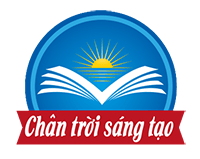Bài tập trắc nghiệm Tiếng Anh lớp 10 Unit 2: School Talks
Bài tập trắc nghiệm Tiếng Anh lớp 10 Unit 2: School Talks
VnDoc.com xin giới thiệu đến quý thầy cô giáo và các em học sinh bộ sưu tập Bài tập trắc nghiệm Tiếng Anh lớp 10 Unit 2 School Talks nhằm hỗ trợ cho việc dạy và học môn Tiếng Anh trở nên hiệu quả hơn. Bộ sưu tập này gồm các tài liệu hay, chất lượng. Mời quý thầy cô giáo và các em học sinh tham khảo.
Giáo án Tiếng Anh 10 Unit 2: School talks
I/ Read the reading below carefully, and then complete it with the best option A, B, C or D given below:
ADULT EDUCATION: HISTORICAL BACKGROUND
Early formal adult education activities focused (1) _______ single needs such as reading and writing. Many early programs were (2) _______ by churches to teach people to read the Bible. When the original purpose was (3) _______, programs were often adjusted to meet more general educational needs of the (4) _______. Libraries, lecture series, and discussion societies began in various countries during the (5) _______. As more people experienced the benefits of (6) _______, they began to participate increasingly in social, political, and occupational (7) _______. By the 19th century, adult education was developing as a formal, organized movement in the (8) _______ world.
The largest early program in the U.S., the Lyceum, (9) _______ (1826) in Massachusetts by Josiah Holbrook, was a local (10) _______ of men and women with some schooling who wanted to expand their own education (11) _______ working to establish a public school system. The Lyceum (12) _______ encouraged the development of other adult education institutions (13) _______ libraries, evening schools, and gifted lecture series. By mid-century, employers and philanthropists began to endow (14) _______ such as the Cooper Union for the Advancement of Science and Art (1859) in New York City (15) _______ the Peabody Institute (1857) in Baltimore, Maryland, for adult education. Large audiences were (16) _______ to the Chautauqua movement, which began (1874) in New York State (17) _______ a summer training program for Sunday school teachers and evolved into a traveling lecture series and (18) _______ school. Chautauqua was the prototype of institutions established to further (19) _______ education in the U.S. By 1876, universities started offering extension programs that (20) _______ education directly to the public...
1/ A. in B. on C. by D. for
2/ A. started B. begun C. made D. done
3/ A. interested B. fascinated C. satisfied D. amused
4/ A. people B. country C. community D. population
5/ A. 18th century B. 19th century C. 20th century D. 21st century
6/ A. schooling B. learning C. education D. teaching
7/ A. deeds B. things C. activities D. societies
8/ A. Eastern B. Western C. Southern D. Northern
9/ A. created B. built C. held D. founded
10/ A. relationship B. friendship C. governorship D. scholarship
11/ A. after B. before C. while D. when
12/ A. movement B. motion C. action D. refreshment
13/ A. like B. such as C. such D. as
14/ A. schools B. centers C. institutions D. offices
15/ A. and B. but C. or D. so
16/ A. interested B. excited C. fascinated D. attracted
17/ A. such B. as C. like D. for
18/ A. spring B. summer C. autumn D. winter
19/ A. common B. important C. main D. popular
20/ A. sent B. gave C. brought D. threw
II/ Match the sentences, clauses or phrases in column A with the ones in column B to make meaningful sentences:
|
A |
B |
|
1/ That new married couple have lived in this town |
A/ and we have been good friends since then. |
|
2/ People say |
B/ until the secretary has finished typing the letter. |
|
3/ We will let you know about that |
C/ I used to play in the rain with my classmates. |
|
4/ When I last saw his mother, |
D/ that drinking too much beer is not good for our health. |
|
5/ My and I met in 2002 |
E/ since they first started traveling. |
|
6/ My aunt’s family have traveled to several cities in China |
F/ since last month. |
|
7/ My brother served in the army |
G/ she was in very good health. |
|
8/ We will wait |
H/ from 1995 to 2000. |
|
9/ When she was a little girl, |
I/ after they have told me the result. |
|
10/ When I was in grade 6, |
J/ she was very fond of eating ice cream. |
III/ Supply the correct form of the word in brackets:
1/ I try to arrange things in some kind of a system, but I'm not very (science) _______ about it.
2/ Government targets for increased productivity are described as "tough but (manage) _______".
3/ The company is making a (concentrate) _______ effort to broaden its market.
4/ His face went red with (shy) _______ when he walked into the crowded room.
5/ She seems to have spent all her life studying in (educate) _______ establishments.
6/ If we served more soft drinks, there would be fewer hangovers and, more (importance) _______, fewer drink-driving incidents.
7/ He is probably the best known (live) _______ architect.
8/ I don't feel ready for (mother) _______ yet.
9/ I felt quite (sister) _______ towards him, but I couldn't marry him.
10/ Couples who are (child) _______ can feel excluded from the rest of society.
IV/ Read each numbered sentence. Then circle the letter of the sentences whose meaning is similar:
1/ When they got home, the film started.
A. First they got home. Then the film started.
B. First the film started. Then they got home.
2/ When he arrived at the school, the first lesson had started.
A. First he arrived at the school. Then the first lesson started.
B. First the first lesson started. Then he arrived at the school.
3/ By the time she retired, she had appeared in about twenty plays.
A. First she retired. Then she appeared in about twenty plays.
B. First she appeared in about twenty plays. Then she retired.
4/ Mark had written 15 novels by the time he decided to give up writing.
A. First Mark wrote 15 novels. Then he decided to give up writing.
B. First Mark decided to give up writing. Then he wrote 15 novels.
5/ Peter had already got a job before he started his own business.
A. First Peter got a job. Then he started his own business.
B. First Peter started his own business. Then he got a job.
6/ The girl left the room after they had come in.
A. First the girl left the room. Then they came in.
B. First they came in. Then the girl left the room.
7/ By the end of the movie, we had gone.
A. First the movie ended. Then we went.
B. First we went. Then the movie ended.
8/ When my brother went to bed, he had switched off the lights.
A. First my brother went to bed. Then he switched off the lights.
B. First my brother switched off the lights. Then he went to bed.
9/ Tom sold his bike after he had sold his car.
A. First Tom sold his bike. Then he sold his car.
B. First Tom sold his car. Then he sold his bike.
10/ Tony had bought a new computer before he bought a new laptop.
A. First Tony bought a new computer. Then he bought a new laptop.
B. First Tony bought a new computer. Then he bought a new laptop.
V/ Read the passage below carefully, and then choose the best answer:
Background, in relation to computers, on the screen, the color on which characters are displayed. (1) _______, a white background may be used for black characters. In a windowing environment in which more than one program or document can be available to the user, open but currently inactive (2) _______ are said to be in the background.
In the context of operating systems and program execution, background refers to a process, or task, assigned a lower priority in the microprocessor's share of time to tasks other than the task running in the (3) _______. A background process thus often performs its work, such as printing or checking for arriving messages on an electronic mail network, invisibly unless the user requests an update or brings the task to the foreground. (4) _______, only multitasking operating systems are able to support background processing. However, some operating systems that do not support multitasking may be able to perform one or more types of background tasks. For example, in the Apple Macintosh operating system running in Single-Launch Mode (with multitasking (5) _______), the Background Printing option can be used to print documents while the user is doing other work.
1/ A. For sure B. In fact C. For example D. In general
2/ A. windows B. systems C. tasks D. characters
3/ A. background B. foreground C. computer D. program
4/ A. Really B. Similarly C. Generally D. Hopefully
5/ A. turned on B. turned off C. turned down D. turned up
6/ What is a separate area on a computer screen which shows information and which you can move around?
A. window B. background C. foreground D. environment
7/ Where can one program or document be available to the user?
A. On the screen B. In a windowing environment
C. In the foreground D. On an electronic mail network
8/ What often performs work, such as printing or checking for arriving messages on an electronic mail network?
A. Program execution B. Foreground processing
C. Microprocessor D. A background process
9/ Which word in the reading means "kinds"?
A. documents B. systems C. tasks D. types
10/ What is the reading about?
A. work B. time C. computer D. windows









